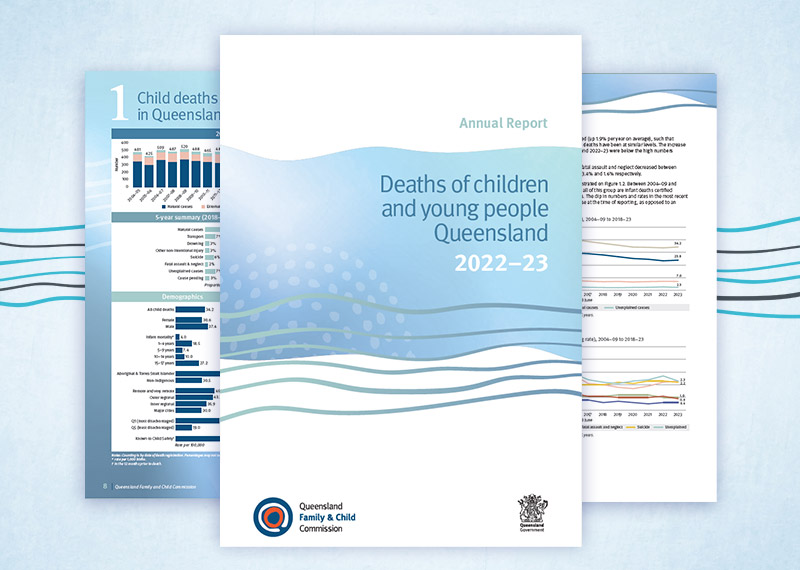New data shows decline in preventable child deaths
14 March 2024The Queensland child death annual report has been released, providing insights into the tragic deaths of 446 children and young people in 2022–23.
- The data shows an overall increase in child deaths compared with the previous year, attributed to an increase in deaths from natural causes, but it also reports a decrease in deaths from external causes, such as transport incidents, suicides and drownings.
- Deaths caused by transport incidents and suicide continue to be the overall leading causes of child deaths in Queensland.
New data released by the Queensland Family and Child Commission (QFCC) reveals 446 Queensland children and young people aged between 0 and 17 years died in 2022–23.
While the number of child deaths has increased in the past two years, there has been an overall decrease in child mortality rates since the Child Death Register came into effect in 2004, down 2.2 per cent year on average.
Disappointingly, First Nations children continue to be over-represented in child death data, with 94 deaths recorded in 2022–23, a mortality rate 2.5 times higher than non-Indigenous children.
In 2022–23, child deaths from natural causes increased 22 per cent, attributed to more deaths from perinatal conditions, while there was a 24 per cent decrease in deaths from external causes, such as transport incidents, drowning and suicide, which are considered preventable causes.
Among infants, sudden unexpected death in infancy (SUDI) continues to be a leading cause of death, accounting for 40 cases in 2022–23, the second highest number recorded in the past eight years.
Suicide was again the leading cause of death in young people aged 10 to 17, with 20 lives lost in 2022–23, the same number as the previous year. While these figures are below the higher numbers recorded in 2018–19 (37) and 2020–21 (30), the rate of suicide is slowly increasing over time.
Concerningly, suicide replaced cancer and tumours as the leading cause of death of children aged 10 to 14, which is a change we encourage mental health researchers to monitor and further explore.
Seventy-two children who died in 2022–23 were known to Child Safety in the 12 months prior to their deaths, an increase from 69 in the previous year. There was an increase in deaths from natural causes. These cases will be reviewed by Queensland’s Child Death Review Board, which identifies improvements needed to strengthen the state’s child protection system.
The QFCC’s child death prevention activities, detailed in its Safer pathways through childhood framework, will focus on understanding paediatric sepsis, family level adversity, and preventable childhood mortality reporting.
The child death data is captured in Queensland’s Child Death Register and is made available at no cost for legitimate researchers and professionals in public education, policy development and child death prevention program design.
The Deaths of children and young people Queensland Annual Report 2022–23 is available to view at www.qfcc.qld.gov.au
Quotes attributed to Queensland Family and Child Commission Principal Commissioner Luke Twyford:
“The death of any child is tragic, and it’s important to remember that behind the data, there is a child with a face, a name and a family, and we must learn from every death as best we can.
“This report provides an in-depth analysis of trends and patterns in child mortality, including risk factors. It is vital that this information informs research, policy improvement, and community safety initiatives aimed at reducing the likelihood of child deaths.
“We saw an increase in deaths from natural causes in 2022–23, specifically perinatal conditions. We need to monitor this to understand whether it is an ongoing trend, and I encourage further analysis from the health sector and researchers.
“I am concerned by the data relating to suicide, which has become the leading cause of death in children aged 10 to 14. More needs to be done to understand and support the mental health needs of children and young people, and we need to educate the community on how to better respond to young people in crisis.
ENDS
For media information contact:
Kirstine O’Donnell | Queensland Family and Child Commission
Phone: 0404 971 164
Email: media@qfcc.qld.gov.au

